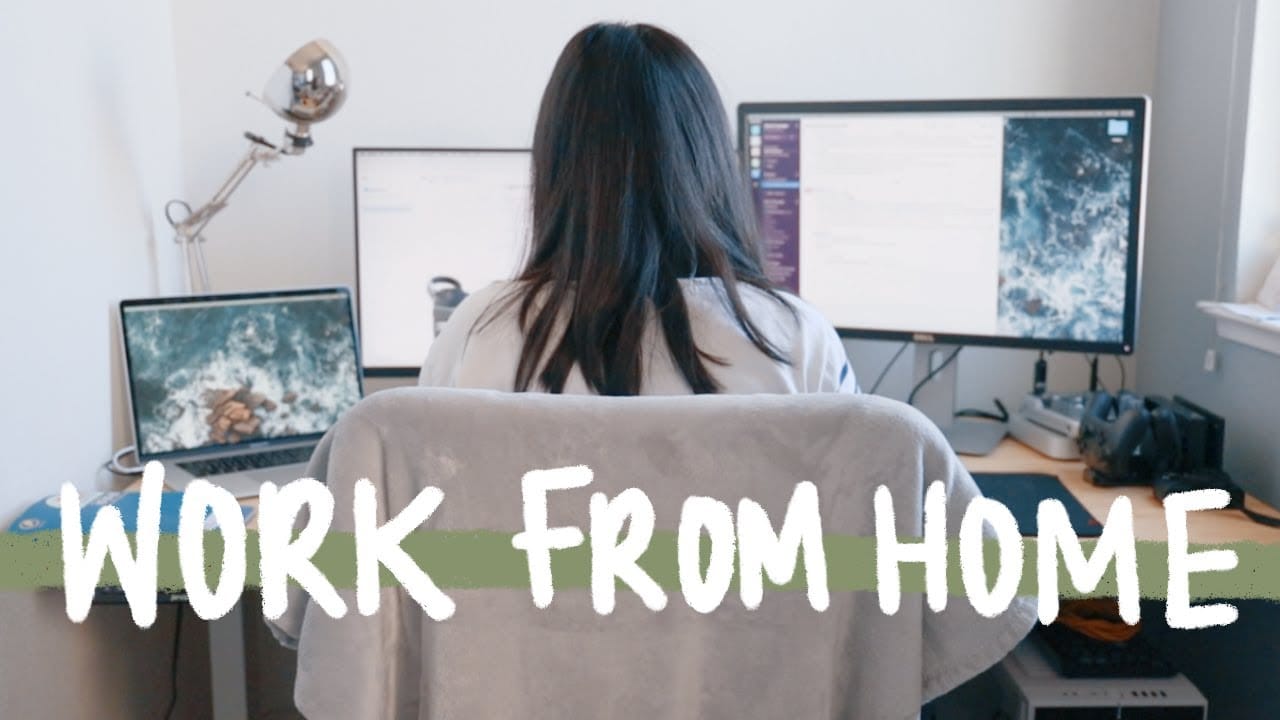
16 Mar Remote Working: Why Your Team Is Still Struggling With Efficiency
Remote Working: Why Your Team Is Still Struggling With Efficiency
Including introverts, hobbyists, and people with mobility issues, the advocates of remote working were among the first to see the positives in the broadly-bleak COVID-19 outbreak.
Hearing that offices couldn’t open was an exciting moment: challenging for many, yes, and exciting.
After years of being told that working from afar was impractical and non-viable as a commonplace occurrence, the opportunity had finally arrived to prove that it could be the new standard.
And so it is that they set about adapting to the new structure of a business, concentrating on overcoming the various obstacles.
It’s safe to say that this was mostly successful.
Most companies pivoted to working from home in March 2020, and an entire year run outside of traditional offices has made it abundantly clear that such things aren’t necessary.
Let’s be clear on one point, though: that so many businesses have survived with minimal damage does not mean that they’ve mastered this way of working.
Even companies that have done exceptionally well during the pandemic times have left some performance on the table.
Is this surprising? It shouldn’t be.
The old office model was developed incrementally over decades, with organisations slowly settling into economic grooves. These things take time.
With one year down, though, it’s a logical time to look ahead, both to the year ahead and the years that will follow it.
The working-from-home trend is far from a stopgap measure.
It may have begun that way, but most workers prefer it and know by now that it isn’t the clear-cut killer of productivity that managerial types once claimed.
It’s also far better for the environment.
But if your team is going to keep working remotely for the foreseeable future, well, it’s high time to stop viewing it as something to be temporarily endured.
It’s the new business structure, set to dominate indefinitely, and the teams that master it will inevitably outperform their rivals.
But what exactly do they need to work on first?
As it stands, the biggest concern for most is efficiency.
Remote workers can handle all their usual tasks and achieve comparable quality levels, but their work can be messy and scattered.
In this post, we’re going to look at some of the possible reasons why your team is still having efficiency issues after a year of remote working — this should give you some direction for implementing improvements.
Let’s get started, shall we?
They still view it as a temporary arrangement

Even though a year has gone by since remote working became routine, it still feels to many like an arrangement that will come to an abrupt end any day now.
There are several reasons for this.
Firstly, there’s the blandness of the last 12 months: stuck at home with no traditional forms of social activity, very few real-world events to anticipate, and the terror of seemingly-endless video calls (Zoom fatigue, as the BBC, calls it).
People quickly found the days blurring together. Even though they know it’s been a year, it doesn’t really feel proper.
Secondly, there’s the confusing back-and-forth of policy and recommendation changes.
Both regional and national lockdowns are intensified, reduced, lifted, then put back into place.
Wild predictions are made about when life will be able to go back to normal.
We’re told that we’re through the worst of it, then we’re told that the worst is yet to come.
Given how swiftly plans change, it’s easy to believe that the culmination of this era will appear out of nowhere.
Thirdly, there’s the sheer weight of denial.
Even those who primarily enjoy working from home don’t really want to accept that it’s going to remain the standard, all because it’s part of this pandemic’s complex legacy.
To keep it might feel akin to keeping the lockdowns going. After all, it’s easy to look back on the pre-COVID-19 times with rose-tinted glasses.
But as long as people think remote working will end out of nowhere, they won’t fully commit to making it as good as it can be.
Why bother mastering a skill if you don’t think you’ll need it in the long term?
This resistance needs to be overcome before you can make progress.
Their home offices are far from optimised

When they suddenly had to start working from home, many people went with the classic setup of a business laptop on a kitchen table.
That was good enough for a short-lived measure, indeed.
And while they switched things up as the months went by without regular service being resumed, the efforts were largely piecemeal: move the laptop to a different table, throw in a dedicated mouse, add a window blind to avoid glare, etc.
In truth, operational efficiency demands practical optimisation.
The tools you’re using don’t guarantee success, but they can undoubtedly stymy it.
So what does this optimisation involve?
Well, it should cover every element of a home office — and every remote-working professional should aim to create a meaningful home office, as opposed to just using a dinner table.
Ergonomics is a significant concern: discomfort due to the setup being used can seriously hamper productivity.
For some comfortable home office equipment ideas, check out this post and speak to your employees to see what they’d like.
What lighting is best for them? What mouse designs feel the nicest to them? There’s no one-size-fits-all solution to this problem.
Notably, it would be best if you also extended this to the laptops being used.
It should go without saying at this point that you need to get each employee a capable business laptop, but don’t forget about operating system preferences.
Making an avid Apple fan use a Windows laptop can damage their ability to work efficiently and their inclination to do so (relate it to asking a left-handed person to throw with their right hand).
Yes, Apple devices are expensive, but one of the advantages of buying a Mac is that you have the option of buying a used MacBook and feeling confident that it’ll keep going.
Apple’s build quality is the stuff of legends, after all, and its machines retain value exceptionally well.
So don’t make the mistake of sending everyone the same range of equipment.
People are unique, and only by catering to that can you get the most out of them.
They feel dispirited due to the state of the world

If you haven’t felt anxiety stemming from the difficulty of the COVID-19 era, you’re in rare company because most people have found the last year brutally difficult.
Even those who’ve been relatively unaffected materially have had to face solitude and distressing uncertainty about what lies ahead — and feelings like that inevitably affect how people work.
The difficulty with this is that you can’t get around it by simply pushing people harder.
That can make things markedly worse.
And since you can’t change the world, what can you do to make an impact?
Well, one thing you can do is provide some assurances about the jobs you provide.
Your employees may be worried about their career prospects, fearing being fired or furloughed (what comes after that?) due to the turbulent global economic climate.
If you think that employees fearing for their jobs should be more efficient, not less, then you don’t understand the nature of humanity.
They may want to work harder and impress you, but that desire won’t help them if they’re too emotionally burdened to concentrate — and then some may feel helpless and stop trying because it might not matter.
It’s not as though plenty of talented and productive people didn’t lose their jobs in the last year.
In addition to letting your team members know that their jobs are safe, you should make an effort to show that they’re not alone in feeling insecure.
You may be in a managerial position (or even an ownership position), but that doesn’t fully protect you from disaster.
Sure, you can’t meaningfully make conditions better, but you can make it clear that you’re all in the same boat — and if you can pull together as a team, you can get through it.
They lack compelling career motivation
We just touched upon professionals who worry desperately about their positions: people who fear being let go for unimpressive productivity (or for reasons beyond their control).
But what about the professionals who feel safe in their roles?
Whether it’s because they’re in industries that have thrived in the last year or because they bring so much to the table, some workers can feel utterly convinced that their jobs aren’t at risk.
This should be a good thing, but it’s pretty concerning when you factor in a lack of clear career prospects.
Promotional paths in times gone by were reasonably straightforward: head up to management, or find a better offer elsewhere.
But now corporate structures have fallen apart, the employment market is saturated with talent, and companies of all types are on thin ice.
The result can be employees who know they won’t lose their jobs and have nothing driving them to perform any better than they do.
If the money isn’t there to promote them, but they’re not interested in going elsewhere, why shouldn’t they rest on their laurels for a while?
When this happens, the onus is on you to figure out how to motivate them.
If you can’t offer outright promotions, what can you offer?
Are there different perks you could grant?
Speak to your team members with the most potential to do more and ask them pointedly how you can motivate them.
You may find that some don’t want more money, more perks, or even more free time: they want to be more invested in the business (perhaps invested in its stock, per Forbes).
If so, figure out how you can make that happen. If they know that their hard work will benefit them in tangible ways, you’ll see their efficiency rise.
They face distractions with limited oversight

Lastly, we need to confront one of the biggest challenges facing remote workers today, and it’s an issue stemming from two core elements of the remote-working model.
Firstly, there’s a significant rise in distractions.
Yes, offices often have many conversations going on (plus people arriving and leaving), but the group behaviour dynamics engender focus.
When you’re working from home, you’re not influenced by what your colleagues are doing.
If you get bored, you can stop and go for a walk, get some food, or watch TV.
Secondly, there’s a lack of present and direct oversight. When you’re working in an office, and your performance starts to dip, your boss can stroll over and speak to you about it.
What do you need to get back on track? You might need help, or you might need firm admonishment.
Either way, you’re always aware of who’s in command — but what about when you’re working from home?
You’re still subservient to someone, but they can’t directly oversee you.
All they can do is track your activity from a distance, leaving out a ton of context.
Combine these things, and you have an apparent problem: abundant temptations drawing workers away from their tasks and no managers around to keep them in line.
This is one of the main reasons why companies used to speak ill of remote working.
They were convinced that it would lead to people shirking their responsibilities — and while the problem is nowhere near as bad as they thought, it certainly is a problem even so.
What can you do about it?
Well, the main thing to do is implement clear time-tracking.
Every task that gets tackled should be tracked, allowing you to review each employee’s work and confirm that they’ve spent enough time working and used their time effectively.
If a task that should take one hour ends up taking six, you can investigate the cause.
Do that, and it won’t matter how many breaks an employee takes: just that they log enough productive hours.
Wrapping up
There are plenty of plausible reasons why your team is still struggling to work efficiently at a distance.
The selection we’ve covered here is far from exhaustive — there are many more you could identify — but it includes the most common issues.
Take a close look at your operation to see what you can do to turn things around.
Maybe the last year wasn’t the most productive, but there’s still plenty of time to improve your remote working habits.




